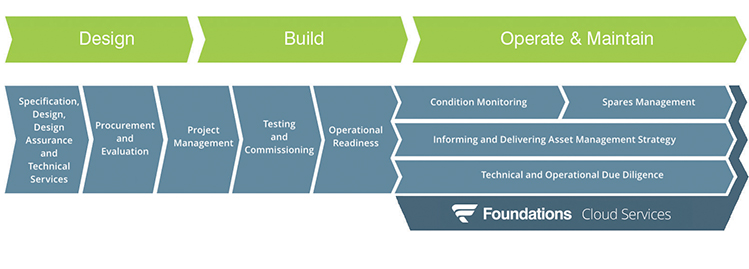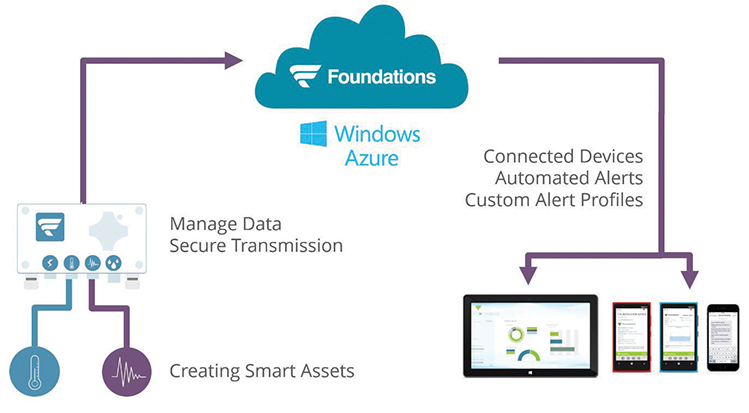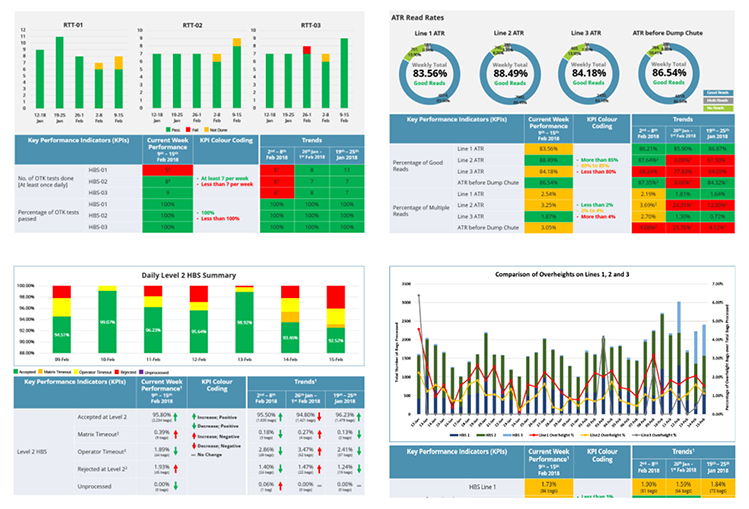Averting the perfect storm created by a compliance deadline, emerging technology and limited resources
Foreword
The challenge of deploying the latest Standard 3 Hold Baggage Screening X-ray machines on the
baggage handling systems of Europe’s airports has been placed at the top of airport operator agendas by the European Commission.
It came about with the passing of legislation requiring all hold baggage screening (HBS) systems to be using European Civil Aviation Conference (ECAC) Standard 3-approved explosives detection systems (EDS) by 2018 in the UK, 2020 for the rest of Europe or by 2022 in specific circumstances.
Whilst many larger airports have either completed the deployment or are in the final stages of deploying Standard 3 technology, many smaller airports across Europe are just getting to grips with the challenge and there are already many horror stories of long delays and over spend.
Stripping out and replacing an entire baggage handling and security screening system for a European airport as it continues to manage the luggage of travelling passengers may sound like an impossible challenge but it is one being faced by many airport operators. It’s very much like conducting a heart transplant whilst keeping the patient’s body fully working and operational.
The purpose of this whitepaper is to layout a blueprint for airport operators to consider for these massive infrastructure projects as the industry faces the perfect storm of a compliance deadline, emerging technology and limited resources.
It is a blueprint that CHS Engineering has already followed successfully at a number of airports in the northern and southern hemisphere. I trust you find it a useful start to your planning.
Colin Smith, Founder and CEO of CHS Engineering.
The blueprint for a delivering a successful Standard 3 Baggage Handling System
Standard 3 BHS upgrade journey

Standard 3 BHS upgrade journey
Concept: Defining the requirements and achievability, reviewing actual requirements i.e. Standard 3 HBS compliance, capacity improvements, maintenance issues and costs.
Feasibility: Taking the concept and developing options for discussion, evaluate for technical fit and buildability, planning phased approach to minimise risk, liaise with stakeholders to develop the design and capacity enhancements.
Options: Taking options and developing into a design for tender, develop documentation. HBS & BHS Asset Standard and User Requirements Document. Evaluate suppliers and tender returns to select the preferred supplier.
Scheme Design – Production Design – Construction, Testing and Commissioning – Handover – Confidence Trials
1. Success is defined early
Success is often defined at the outset of the project. The airport’s executive team must define clear accountability and control by appointing a single organisation as project lead responsible for the programme from concept through to delivery.
CHS Viewpoint:
“If there is single structure of control and accountability at the outset then it comes down to the competency of the individuals to deliver. But how those individuals are employed is key. The fewer the parties, the easier to ensure a cohesive direction.”
Phased programmes and realistic timescales for tenders
Alongside single point of control and accountability, another important early step towards success is to ensure the concept design has clear, phased programmes and realistic timescales when it goes to tender.
CHS Viewpoint:
“This avoids suppliers searching for every opportunity to recover costs both in terms of scope and delays. This is the basis of a good relationship with a supplier and maintaining those good relationships is essential for success.”
Clear specification removes ambiguity
The final essential element of project management is the strength of technical administration. Productive meetings flow from clear documentation and specification of systems.
CHS Viewpoint:
“These documents are essential reference points for clarification and remove ambiguity at each phase of the project.”
2. Deployment Challenges
When delivering projects there are four important considerations:
a) Which X-ray technology?
Choosing the right Standard 3 X-ray system is critical. The technology is still developing rapidly and understanding where each provider is in its development cycle, the product maintenance and life cycle support offered and the company’s financial stability are all important considerations.
New X-ray System Checklist for consideration:
- The types of log and diagnostic system required
- Accessibility panels for parts replacement
- Vibration and heat generation
- Throughput and false alarm rates
- Operational availability
- Time take to calibrate and achieve “scan ready” state from sleep mode.
- Frequency and duration of recalibration in a day
- Time taken to remove jammed bags
- Time taken to achieve scan ready after bag removal
- Machine decision time for bags immediately preceding or following a jam
- Screening capacity
- Reliability
- Security
- Cost of ownership
CHS Viewpoint:
“In recent deployments we have carried out more than 16 trials and considered 20 different factors in X-ray selection.”
b) Validation of Baggage Handling System and Hold Baggage Screening
Machine technology may have improved radically but it is still only one link in a chain. Validation of software controls and sufficient time for testing is critical to ensure the system is failsafe in every scenario. A total of 80 different test cases and 300 validation tests are typically carried out by CHS when validating a new system.
CHS Viewpoint:
“Validation is critical and requires adequate time and tests to ensure the system is failsafe in every scenario that may occur in operational use. It is a surprise to me that compliance legislation does not cover this in more detail, it may come.”
c) Maintenance Strategy
As systems become more complex they require more comprehensive monitoring and maintenance. In reality, 24/7 monitoring is far superior to periodic inspection. The right Computerised Maintenance Management System (CMMS) using the latest Internet of Things connectivity is essential for a future-proof system.
Remote Monitoring with Foundations® Connect

CHS Viewpoint:
“The cost comparison of employing 1 man-day compared with remote monitoring technology is outstanding | In reality 24/7 monitoring, polling every few minutes is far superior to periodic inspection. A well managed maintenance regime will improve performance, availability and will certainly extend the life of equipment.”
d) Operational Readiness
Implementing a more complex Baggage Handling System requires new ways of working to be adopted by the workforce. Weekly stakeholder sessions to discuss operational issues and a live dashboard providing system and operational performance information is essential.
Typical dashboard information should be:
- Operational Test Kit (OTK) completion
- Level 1 & 2 HBS statistics
- Over height bags vs total
- Ration of multiple read bags vs problem bags
- Automatic Tag Reader rates
- Top 20 daily alarms

CHS Viewpoint:
“Having accurate data provides us with information on what is and isn’t working and where issues lay. This information is essential to eliminate hearsay and emotion from conversations. It is an essential part of bringing the organisation with you.”
CHS Engineering in Action

CHS Engineering successfully deploys next generation baggage handling system at Newcastle International Airport
Next Generation Standard 3 security compliant system delivered on time and under budget
CHS Engineering has successfully deployed a next generation baggage handling system at Newcastle International Airport on time and under budget. The system, which meets the next generation Standard 3 regulations for security and scanning set by the European Civil Aviation Conference (ECAC), serves the North East’s largest airport and carries the luggage of over 5m passengers per year.
CHS Engineering, one of the world’s leading independent specialists in the deployment, commissioning and testing of baggage handling solutions, completed the 18 month project in April 2018.
The company took accountability from concept through to final delivery of the project. CHS Engineering was responsible for managing the design and specification of the new baggage and security screening system, evaluation and selection, construction of the new solution and automated management and maintenance controls with full commissioning to validation and operational handover.
Richard Knight OBE COO, at Newcastle International Airport, said: “With the introduction, and integration of Standard 3 x-ray technology, this HBS system ensured Newcastle Airport complied with the regulatory standards imposed on airport baggage screening, well in advance of the September 2018 deadline.”
“Drawing on the unique range of services offered by independent consultants CHS Engineering Services, Newcastle Airport developed a concept layout which solved present baggage throughput requirements, and equally as importantly, it gave consideration for future growth of the airport. With the project work being undertaken in a live environment throughout, delivery of this complex solution required all parties to work closely with the airport to ensure minimal disruption to operations and the overall passenger experience.”







